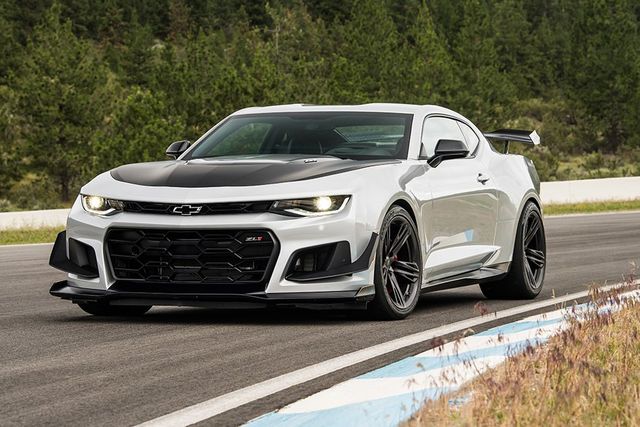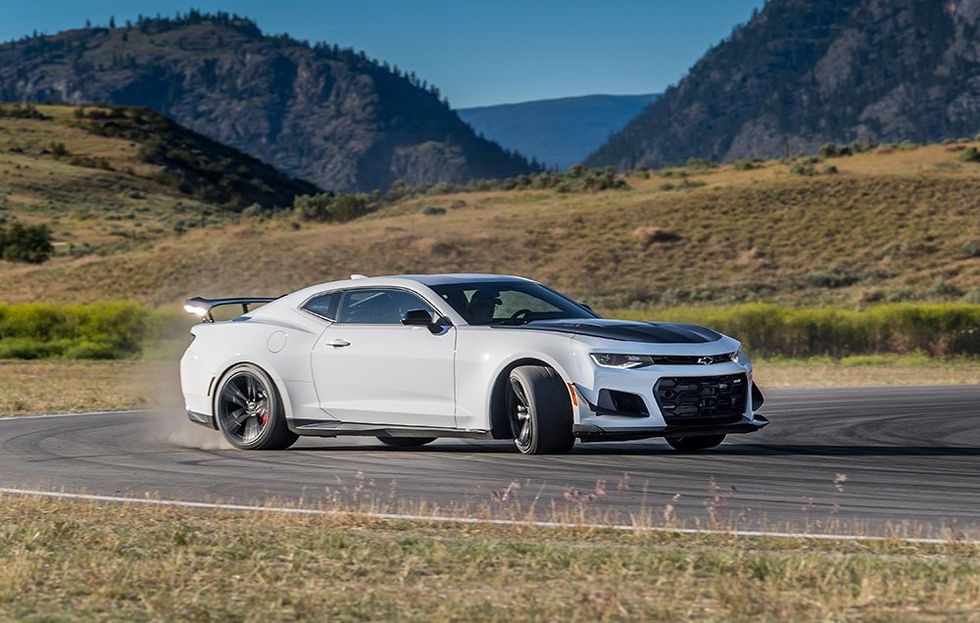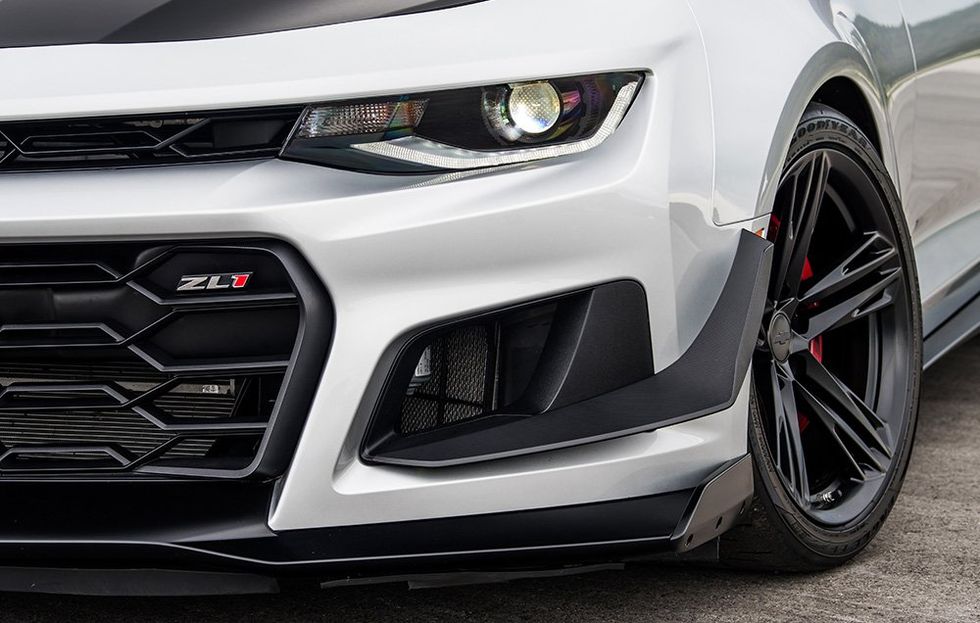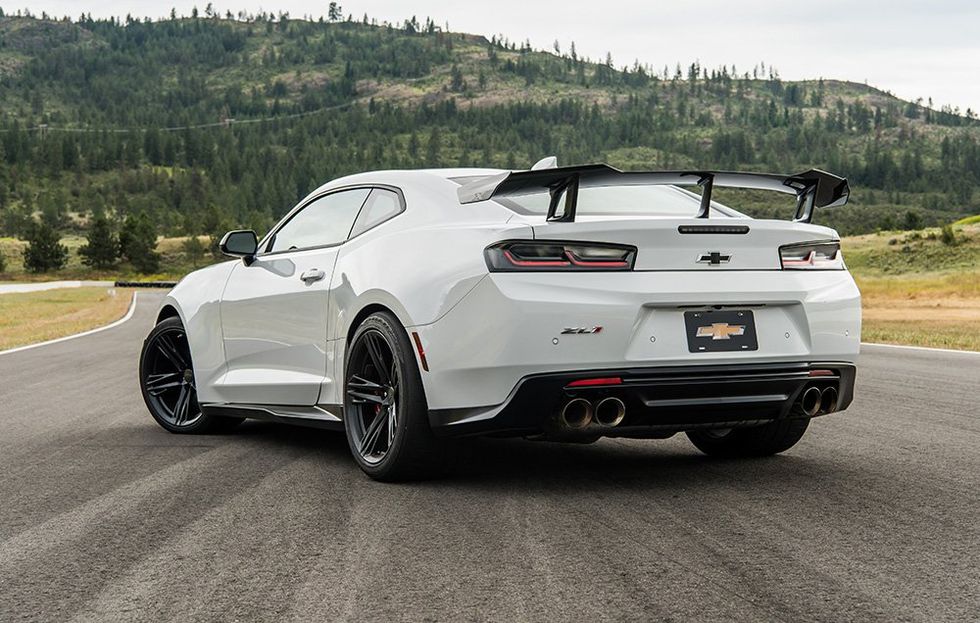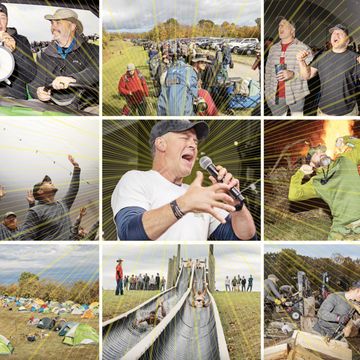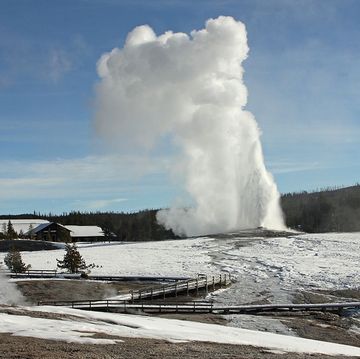Today's cars are more high-performance than ever. Manufacturers are regularly churning out street-legal rockets—packing more than 500 horsepower—intended to pull double duty and dominate at a track day, too. When it comes to testing these vehicles, you need someone who can push them to their absurdly high limits. Welcome to Racer Reviews, where we put real race car drivers behind the wheel. Today's hot shoe is Ryan Lewis, an American Le Mans Prototype driver.
Chevrolet likes to go fast. Some people that buy Chevrolet products like to go fast. The issue is many of those customers can't handle going as fast as the Chevrolet products can. The 2018 Chevrolet Camaro ZL1 1LE is the olive branch being offered to the go-fast enthusiasts of the Americas. In this savage monster, Chevy has been made absolutely clear that this car was born to work on the track, then drive home to rest and plot its next escape.
Speed is cheap these days. Ten years ago, anything with more than 500 horsepower was in supercar territory. Now a fleet of such-powered cars are lined up at your friendly local dealership, hopefully some distance from the novelty dancing inflatable noodle man. The horsepower wars don’t show much sign of receding soon, and that's a wonderful thing, because we are reaping all the lovely benefits.
As the quest for dominance in performance marches on, a new front has appeared: engineering. Specifically, the concept of design being led by the all-encompassing quest for speed. Let's dive into the latest trump card in the Pony car battle: the Camaro ZL1 1LE. It'll soon be passing you on the left. Don’t forget to wave.
THE DRIVE:
Did you know there is a high desert in Canada? Neither did we until Chevrolet invited us to the beautiful Okanagan Valley, British Columbia. But this trip would involve none of that tawdry, scenic road driving. This trip would be spent solely on the track.
Nestled among the valleys innumerable vineyards, a short drive from the lakeside resort town of Osoyoos lays Area 27. This is a race circuit born of the dreams of a small group of racing drivers, including Indycar and Formula 1 World Champion Jacques Villeneuve. Villeneuve was instrumental in designing the layout of the circuit, a guiding principle of the process being “to design a track on which I would be proud of getting pole position." It is the most interesting and enjoyable new circuit. And challenging enough to test the likes of the Camaro ZL1 1LE.
LOOK AT THAT:
It's impossible to miss the focus Chevrolet has put on loading the ZL1 1LE with grip-feeding aerodynamic additions. The carbon fiber rear wing (a first for General Motors) could easily be mistaken as being borrowed straight from Chevy’s Corvette Le Mans racing program. It was designed in a Formula 1 wind tunnel to add up to 300 pounds of downforce at 150 mph. (Yes, seriously. Chevy wants you do to 150 in this sucker.)
The nose of the car has received the same treatment with reworked grill, protruding splitter and huge dive planes. None of this is superficial; every piece is either grabbing the air to increase down-force or to direct air into cooling duties. It is an aesthetic driven by the desire to go faster, be better, and it's a beautiful thing. While unable to be seen, you'll definitely notice the snarl from the Corvette Z06-derived LT4 supercharged 6.2-liter V-8. That powerplant generated 650 horsepower and 650 lb-ft of torque.
DON’T LOOK AT THIS:
The exterior design of these late-gen Camaros is polarizing. The distinctly angular proportions have inspired gasps of adoration alongside sneers of disgust. Such is the nature of the car business. The aerodynamic additions only add to the Camaro's already pointy look, which could make some concerned with appearing they have joined the local Fast & Furious fanboy club. There's no stunting here, though. The goal isn't looking dope; the goal is shaving seconds off lap times.
COCKPIT AND CABIN:
Not much changes inside the Camaro when you check the “1LE” box on the build sheet. When you chose to pull the potential 1.1 Gs of lateral force, the Recaro seats offer you ample support to mitigate the sensation that you are about to end up in your passenger's lap. But the side bolsters do have a tendency to hamper your elbows at more acute angles of steering lock. The rear seats have been stripped down to bare bones padding and thickness in order to save on weight. Maybe a complete rear seat delete option would have been viable?
The power driver's seat and manual steering column both have sufficient ranges of motion to allow any sized driver to find a comfortable to position to knock out a few laps. Carbon fiber surfaces, polished metal and contrast-stitching throughout serve up the standard sports car requirements. It feels somewhat sparse, but this only feels more appropriate under the 1LE spec.
MORE, PLEASE:
The Camaro ZL1 1LE will make you look faster than you deserve. (Partially because it is blisteringly quick. The scramble to 60 takes a mere 3.6 seconds in the auto.) For a muscle car that can lap the Nurburgring in 7 minutes and 16 seconds—faster than any Ferrari or even its Corvette brethren—it is absurdly approachable. There is an insidious belief among some in the driving enthusiast community that a fast car should be evil to drive, trying to buck you off at every corner, requiring the driver to take hold of it like a wild and crazed animal. Nonsense. Cars like that are challenging, yes; exciting to the point of terror. But they are not good at their job. Al Oppenheiser, the Camaro’s lead engineer, made it abundantly clear that the engineering team's aim was to build a track car that was accessible to a wide spectrum of driver ability. The ZL1 1LE is the car you can enjoy on your first time on track or the weekend after you raced at Le Mans.
LESS, PLEASE:
As an everyday driver, the all of the things that make ZL1 1LE such a poised track-slayer could potentially start to wear you down. It is a physically involving car to drive, stiffly sprung with hard mounted suspension, shod with a very high-performance, and therefore high-cost tire. You could indeed drive this car everyday, but perhaps a used Camry is better for the daily grind. Save the Camaro for to and from the track.
THE FUTURE IS NOW:
The car comes loaded up with all of Chevy's brightest and shiniest new tech. Chevy MyLink runs through an 8-inch touch screen, compatible with both Apple CarPlay and Android Auto. Bose Premium Audio is standard. A bright heads-up display offers four different options of information, even displaying your lateral G-force. The 1LE Chevy’s “Stabilitrak” traction control system can be gradually turned down, allowing you more sideways slip and tire smoke before the car decides to rescue you from yourself. In Track mode all computer intervention can be disabled, leaving you to your own devices. The 1LE does not come equipped with the magnetic dampers of the ZL1, instead using a new performance-focused suspension set up. (More on that in a second.) Comfort through technology gives way to handling through simplicity. And how can you attempt to live up to this cars potential? By diligently studying the video recordings and GPS data from the onboard Chevrolet Personal Data Recorder. You can even use it get that kid at the valet stand fired when it records him trying to do a burnout in third gear.
GET REAL:
The recent Camaro Z/28 signaled GM’s ability to build a car that was capable of felling giants. Porsche GT3 owners in fear of engine recalls began singing the praises of their newly purchased Z/28 Camaros. It's plain to see that the same philosophy that made the Z/28 such a favorite with drivers has crystalized inside the Camaro engineering division.
Heritage and going fast are important things at Chevrolet. When the first “1LE” code appeared on a Camaro options sheet in the Eighties, it meant you were buying better brakes and suspension, likely to go racing. Thirty years on and that basic principle still rings true, except now, the ZL1 1LE Chevy has leveraged engineering partnerships with outside companies in order to make this a truly track ready sports car. No need for mods here; they've been taken care before the car leaves the assembly line.
First up, the ZL1 1LE gets a high-performance suspension from specialists Multimatic. This system provides exceptional handling that's acutely adjustable by anyone with a car jack and a basic toolbox. The car's front ride height can be adjusted over a total range of 18mm (that’s a lot for a car) up and down. Camber can be adjusted up to three degrees negative with an ingenious rotating shock system, and the rear anti-roll bar has three stiffness settings. You only need to be willing to get your hands a bit dirty in order to vastly change the handling characteristics of your car. At the heart of it all lays Multimatic’s DSSV (Dynamic Suspension Spool Valve) damper technology. Know who else gets that very system? Every Formula 1 car and every other race car.
The ZL1 1LE also gets some new shoes. Extra wide, at 12 and 13-inches respectively, front and rear. Goodyear came onboard at the beginning of the project to produce a tire that would be capable of satisfying the needs of a 3,800-pound car with 650 ponies and equal lb-ft of yank. The Eagle F1 Supercar 3R is the Goodyear's first foray into the “only just road legal” tire segment, and it is an impressive debut. During our drive, the level of grip was so surprising that it took several laps to mentally process the car's potential. Even after several laps of persistent abuse, the balance of the car does not drastically change. Tire grip does not disappear. The only time we saw lurid slides and rear tire smoke was due to our own violent provocation. That's rare from a car with such power and proportions.
Lastly, tack on the wind tunnel-tested, 500-ish pounds of extra aerodynamic downforce, the state-of-the-art Bosch anti-lock braking system—tuned at the Nurburgring— with 6-piston steel Brembo brakes (“The car doesn’t need carbon brakes. It already stops well. Carbon brakes are a waste of money for the customer,” quipped Al Oppenheiser.) Remove some 60 pounds of excess weight from the standard ZL1 and Chevrolet has produced an incredibly fast road car that would rather spend its entire life on the track.
SCORECARD:
Performance: A+
Comfort: C, but it's effectively a race car, which are never comfortable
Cargo Capacity: C
Lust Factor: A -
Overall: A
BOTTOM LINE:
I'm looking forward to seeing the ZL1 1LE start arriving at track events and autocrosses. More so, I'm looking forward to seeing the slack-jawed faces of the owners of the “real” sports and supercars, as the scowling Camaro devours the asphalt in front of it, relentlessly closing the distance until the pedigreed vehicles must dejectedly move aside. If you want to upset people that spent three times as much on their supercar track day toy, the ZL1 1LE will the best implement to impart misery. I cannot wait to drive one again.
SPECS:
Price (As Tested): $70,990
Powertrain: LT4 supercharged 6.2-liter V-8, 650 horsepower, 650 lb-ft
Fuel Economy: N/A
